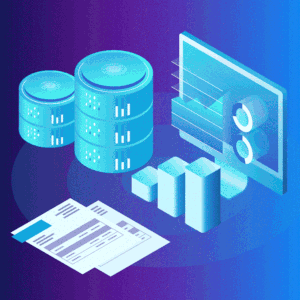
In today’s data-driven business environment, leveraging business intelligence (bi) is crucial for making strategic financial decisions. Bi tools enable organizations to analyze vast amounts of data, gain insights into business performance, and manage client relationships more effectively. This blog post will explore how businesses can utilize analytics to make informed financial decisions and enhance client management.
Understanding business intelligence
Business intelligence encompasses the strategies and technologies used by enterprises for data analysis and management. Bi tools gather, process, and analyze data, providing actionable insights that help businesses make informed decisions.
Statistics: according to a report by marketsandmarkets, the global business intelligence market is expected to grow from $23.1 billion in 2020 to $33.3 billion by 2025, at a cagr of 7.6%.
The role of business intelligence in financial decision-making
Comprehensive data analysis
Bi tools allow businesses to analyze large volumes of financial data from various sources, providing a comprehensive view of the organization’s financial health.
Data integration: bi systems integrate data from different sources, such as erp, crm, and accounting software, ensuring a unified view of financial information.
Real-time analytics: bi tools provide real-time data analysis, enabling businesses to make timely and informed decisions.
Example: power bi integrates with various data sources to provide real-time analytics and dashboards, giving businesses a comprehensive view of their financial performance.
Statistics: according to forbes, companies that use bi tools for data analysis experience a 10% increase in revenue growth.
Financial forecasting and budgeting
Bi tools enhance financial forecasting and budgeting by analyzing historical data and identifying trends.
Predictive analytics: bi tools use predictive analytics to forecast future financial performance based on historical data and market trends.
Budget management: bi systems help businesses create accurate budgets by analyzing past expenditures and revenue patterns.
Example: tableau uses predictive analytics to forecast financial performance, helping businesses create accurate budgets and plan for future growth.
Statistics: according to a study by fsn, 88% of finance teams using bi tools report improved budgeting and forecasting accuracy.
Performance measurement
Bi tools enable businesses to measure and track key performance indicators (kpis), providing insights into operational efficiency and financial health.
Kpi dashboards: bi systems offer customizable dashboards that display kpis, allowing businesses to monitor performance in real-time.
Benchmarking: bi tools compare performance against industry benchmarks, helping businesses identify areas for improvement.
Example: qlik sense provides kpi dashboards that help businesses track financial performance and compare it against industry benchmarks.
Statistics: according to a report by betterbuys, 85% of organizations using bi tools achieve better financial performance.

Cost management
Bi tools help businesses identify cost-saving opportunities and improve cost management practices.
Expense analysis: bi systems analyze expenses, identifying areas where costs can be reduced without impacting operations.
Operational efficiency: bi tools highlight inefficiencies in business processes, allowing businesses to streamline operations and reduce costs.
Example: sap analytics cloud analyzes operational costs and identifies opportunities for cost reduction, improving overall efficiency.
Statistics: according to nucleus research, businesses using bi tools experience an average roi of $13.01 for every dollar spent.
Risk management
Bi tools enhance risk management by identifying potential financial risks and providing insights into mitigating them.
Risk analysis: bi systems analyze financial data to identify risks, such as cash flow issues, credit risks, and market fluctuations.
Proactive management: bi tools provide real-time alerts and recommendations, allowing businesses to address risks proactively.
Example: sas business intelligence analyzes financial risks and provides actionable insights to help businesses manage and mitigate risks.
Statistics: according to a study by deloitte, 67% of businesses using bi tools report improved risk management capabilities.
Enhancing client management with business intelligence
Customer segmentation
Bi tools enable businesses to segment clients based on various criteria, such as purchase behavior, demographics, and profitability.
Segment analysis: bi systems analyze customer data to identify segments, helping businesses tailor their strategies to different client groups.
Personalized marketing: segmentation allows businesses to create personalized marketing campaigns, improving customer engagement and retention.
Example: zoho analytics segments customers based on purchase behavior, helping businesses create targeted marketing campaigns.
Statistics: according to mckinsey, personalized marketing can lead to a 10-30% increase in revenue.
Client profitability analysis
Bi tools analyze client profitability, helping businesses focus on high-value clients and improve overall profitability.
Profitability metrics: bi systems calculate profitability metrics, such as customer lifetime value (clv) and profit margins, for each client.
Resource allocation: businesses can allocate resources more effectively by focusing on high-value clients and optimizing service levels for different segments.
Example: domo analyzes client profitability, helping businesses identify high-value clients and optimize resource allocation.
Statistics: according to bain & company, increasing customer retention rates by 5% can increase profits by 25-95%.
Customer relationship management (crm) integration
Integrating bi with crm systems provides a holistic view of client interactions and improves client management.
360-degree view: bi tools integrate with crm systems to provide a 360-degree view of client interactions, including sales, support, and marketing activities.
Enhanced client insights: integration allows businesses to gain deeper insights into client needs and preferences, improving client management.
Example: microsoft power bi integrates with dynamics 365 crm, providing a comprehensive view of client interactions and enhancing client management.
Statistics: according to salesforce, businesses that integrate bi with crm systems see a 29% increase in sales and a 26% increase in customer satisfaction.
Client feedback analysis
Bi tools analyze client feedback from various sources, helping businesses improve their products and services.
Feedback aggregation: bi systems aggregate feedback from multiple sources, such as surveys, social media, and support interactions.
Sentiment analysis: bi tools use sentiment analysis to gauge client satisfaction and identify areas for improvement.
Example: ibm cognos analytics aggregates and analyzes client feedback, providing insights to help businesses improve their offerings.
Statistics: according to a study by temkin group, businesses that proactively manage client feedback achieve a 12% increase in customer advocacy.
Sales performance analysis
Bi tools analyze sales data, providing insights into sales performance and helping businesses optimize their sales strategies.
Sales dashboards: bi systems offer sales dashboards that display key sales metrics, such as conversion rates, average deal size, and sales cycle length.
Performance insights: bi tools analyze sales performance, identifying trends and areas for improvement.
Example: looker provides sales dashboards and performance insights, helping businesses optimize their sales strategies and improve sales performance.
Statistics: according to a study by harvard business review, businesses that use bi tools for sales analysis see a 15% increase in sales productivity.
Implementing business intelligence for financial decision-making
Choosing the right bi tools
Select bi tools that align with your business needs and integrate seamlessly with your existing systems.
Tool selection: evaluate bi tools based on their capabilities, ease of use, and compatibility with your data sources and business systems.
Integration: ensure that the tools can integrate with your existing technology stack to provide a unified view of business performance.
Example: tableau integrates with various data sources, such as salesforce, google analytics, and excel, to provide comprehensive business insights.
Statistics: according to a study by salesforce, businesses that integrate bi tools with their existing systems see a 30% increase in productivity.
Training and development
Provide comprehensive training to staff on how to use bi tools effectively.
Onboarding: include training on bi tools as part of the onboarding process for new employees.
Ongoing training: offer continuous training and development opportunities to ensure that staff stay up-to-date with the latest advancements in bi technology.
Example: ibm watson analytics provides training modules to help employees improve their skills in using bi tools.
Statistics: according to linkedin learning, 94% of employees say they would stay at a company longer if it invested in their learning and development.
Data quality management
Ensure that the data used for bi analysis is accurate, complete, and reliable.
Data governance: implement data governance policies to maintain data quality and integrity.
Data cleaning: regularly clean and update your data to remove inaccuracies and inconsistencies.
Example: talend data quality ensures that the data used for bi analysis is accurate, complete, and reliable.
Statistics: according to experian, 84% of companies believe that data quality issues undermine their ability to provide an excellent customer experience.
Monitoring and optimization
Continuously monitor the performance of bi tools and optimize them based on feedback and data analysis.
Performance metrics: track key performance indicators (kpis) such as data accuracy, analysis speed, and user adoption rates.
Continuous improvement: use data analysis to identify opportunities for optimization and improvement in bi processes.
Example: sisense uses ai to continuously analyze and optimize bi processes, ensuring that businesses get the most value from their data.
Statistics: according to mckinsey, businesses that leverage bi for continuous improvement achieve a 20% increase in operational efficiency.
Conclusion
Leveraging business intelligence is crucial for making strategic financial decisions and enhancing client management. By utilizing bi tools for comprehensive data analysis, financial forecasting, performance measurement, cost management, risk management, and client segmentation, businesses can gain valuable insights that drive growth and efficiency. Implementing the right bi tools, providing comprehensive training, ensuring data quality, and continuously monitoring and optimizing bi processes are key to realizing the full benefits of business intelligence. Embracing bi will enable businesses to make informed financial decisions, improve client management, and achieve success in an increasingly competitive landscape.

























